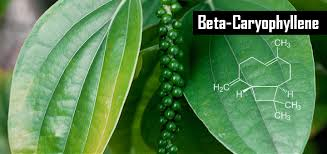Natural Anti Inflammatories
This is an article in progress! This will all make sense eventually.
A black pepper plant:

from https://en.wikipedia.org/wiki/Caryophyllene
Caryophyllene /ˌkæri.ɵfɪˈliːn/, or (−)-β-caryophyllene, is a natural bicyclic sesquiterpene that is a constituent of many essential oils, especially clove oil, the oil from the stems and flowers of Syzygium aromaticum (cloves),[1] the essential oil of hemp Cannabis sativa,[2] rosemary Rosmarinus oficinalis,[3] and hops.[4]
Caryophyllene is one of the chemical compounds that contributes to the spiciness of black pepper. In a study conducted by Jürg Gertsch et al. from the Swiss Federal Institute of Technology (ETH Zurich), beta-caryophyllene was shown to be selective agonist of cannabinoid receptor type-2 (CB2) and to exert significant cannabimimetic antiinflammatory effects in mice.[2] Because the widespread plant natural product beta-caryophyllene is an FDA approved food additive and ingested daily with food it is the first dietary cannabinoid. Whether this compound is able to modulate inflammatory processes in humans via the endocannabinoid system is yet unknown. Beta-caryophyllene does not bind to the centrally expressed cannabinoid receptor type-1 (CB1) and therefore does not exert psychomimetic effects.
The approximate quantity of caryophyllene in the essential oil of each source is given in square brackets ([ ]):
Cannabis, hemp, marijuana (Cannabis sativa)[2] [3.8–37.5% of cannabis flower essential oil][8]
Black Caraway (Carum nigrum) [7.8%][9]
Cloves (Syzygium aromaticum)[1] [1.7%-19,5% of clove bud essential oil][10][11]
Hops (Humulus lupulus)[12] [5.1–14.5%][13]
Basil (Ocimum spp.)[14] [5.3–10.5% O. gratissimum; 4.0–19.8% O. micranthum][15]
Oregano (Origanum vulgare)[16] [4.9%-15.7][17][18]
Black pepper (Piper nigrum) [7.29%][19]
West African Pepper (Piper guineense) [57.59% (black); 51.75% (white)][19]
Lavender (Lavandula angustifolia) [4.62% of lavender oil][20]
Rosemary (Rosmarinus officinalis)[3] [0.1–8.3%][21]
True cinnamon (Cinnamomum zeylanicum) [6.9–11.1%][22]
Malabathrum (Cinnamomum tamala) [25.3%][23]
Cananga odorata [3.1%-10.7%][24]

